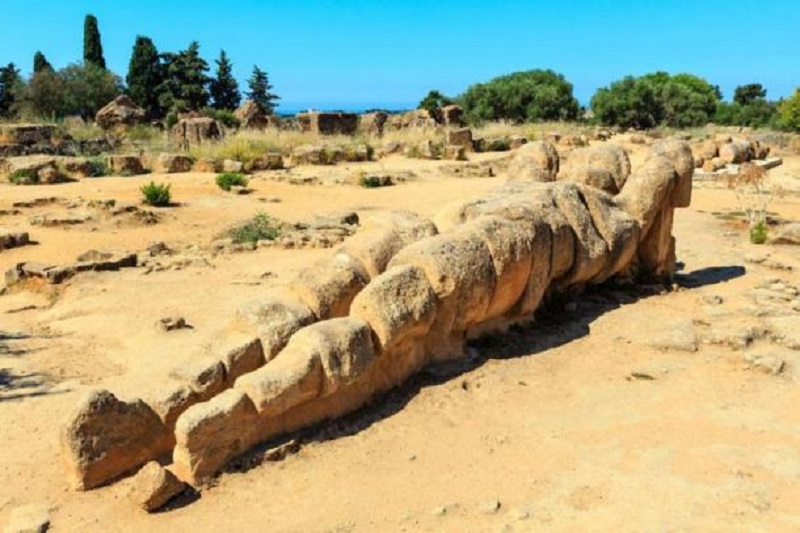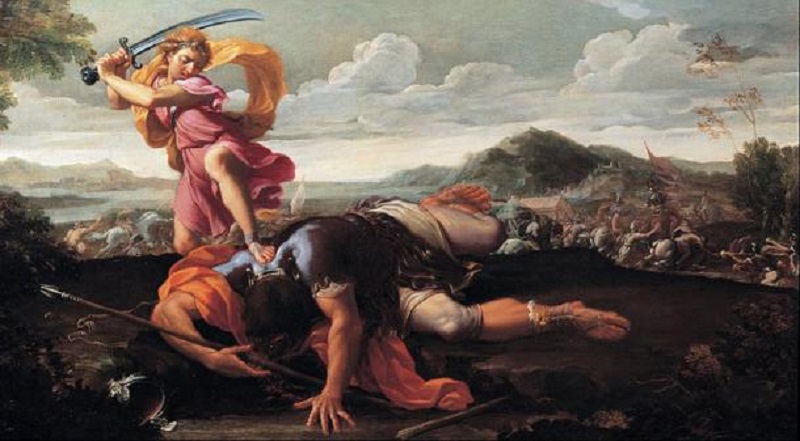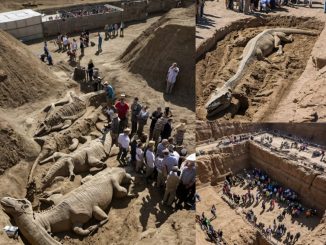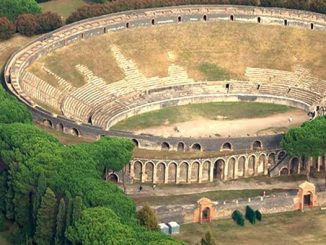Sicily is the most famous triangle in the middle of the Mediterranean. But unlike Bermuda, nothing has disappeared here – in fact it’s a melting pot of things and people. The island shines like a beacon in the night because of its history, culture and works of art absorbed by the countless peoples who have dominated it over the centuries.
Around 6,000 BC it was dominated by the Sicans, then its lands were trampled by the Phoenicians, Greeks, Carthaginians and Romans in 246 BC. The Arabs dominated the region for three centuries, followed by the Normans, then the Swabians, Angevins and Aragonese. And there was the rule of the Spaniards, no less tyrannical than the French, and then came the Savoys, then the Austrians and the Bourbons…
The Sicilians finally became masters of their island in 1860 with unification and annexation from the Kingdom of Italy.
Sicily is a land that many people desire
Each of these careers left behind something great – creating a fusion of styles that can’t be found anywhere else in the world. This unique combination of splendid buildings, churches, gardens and even cuisine is now key to the island’s culture. Even local dialects cannot escape the influence of the chaotic mixture of many languages.
It is a land of myths and legends, of violent contrasting landscapes and sweet temptations. It is said that one day, Pluto, god of the underworld, fell in love with Proserpina, daughter of the mother earth goddess Ceres, kidnapping her while she was picking daffodils in the green fields at the foot of Etna. The young girl was pulled down into the bowels of the Earth, into the world of Darkness, to become his bride.
Ceres, despondent over the loss of her daughter, begged Jupiter (brother of the earth goddess) to ease her pain. And Jupiter, generously decreed that Proserpina should spend six months of each year with her mother and six months with her husband Pluto.
Statue of Ceres. ( Alexey Achepovsky / Adobe Stock)
Precursor to the best legal decisions on the subject. It is believed that Proserpina’s sacrifice determined the rise of spring and the abundance of fruits that have always made Sicily famous. In honor of his fragile bride, Pluto gave birth to a green stream, Fonte Ciane, from which the river of the same name flows and where sedges grow on the shore. From this story we understand the mythical origins of papyrus, a famous river, and Etna, the most important active volcano in Europe.
The island has two large green lungs: the Madonie range, with an altitude of nearly 2000 meters (6561.68 ft.) and the Nebrodis, mountainous reliefs covered with forest and dotted with water mirrors, continuing along along the Apennine ridge. To the south of these places we find historical lands and ancient finds: Selinunte, Agrigento and Syracuse.
Selinunte – Splendor and celery
Selinunte is an ancient strategic base along the Mediterranean coast. It was built on the coast between the Selinos (today Modione) and Cottone rivers, which were previously navigable. Founded in 650 BC by Diodoro Siculo, it was conquered by the Carthaginians around 200 BC and is one of the largest archaeological parks in Europe. Here lie the ruins of an ancient Greek city, said to have had a population of up to 80,000 in its prime.
The city’s name may be derived from the wild celery (Ancient Greek: σέλινον, transliterated Selinon) that grows on the spot.
Sicily, Italy – Acropolis of Selinunte. ( robertonencini / Adobe Stock)
For the same reason, celery leaves were used as symbols on their coins. However, there are conflicting reports regarding this plant – some say selinon is parsley, others say celery. Dr. Alfonso La Rosa, naturalist and botanist, believes that people unjustly called this plant “Petroselium” (the origin of the word Petrosino is still used in the local Sicilian dialect) belongs to the same family as parsley but lives and grows in water. environment.
Through a specific ecosystem and also on the basis of available historical factors, the “selinon” plant still belongs to the family Umbelliferae but its specific name is Apium nodiflorum, the colloquial name is “water celery”.
In 10 of the 270 hectares of the archaeological park, in coordination with a consortium led by the Sicilian Regional Council of Agriculture, the Harvest Ritual “Wheat of the Gods” is held for the second year . Ancient grains of several types were found during excavations and legumes such as lentils and chickpeas were sown and harvested.
Dionysus’ Ears of Syracuse and Burning Mirrors
2,800 years old, Syracuse boasts Greek theaters, Roman ruins, mysterious caves, Norman castles, and Gothic and Byzantine churches. Reminders of different eras of its past exist side by side in a fascinating mix of cultures.
Latomies, quarries used as prisons in ancient times, are a particular source of intrigue. There are many, but the most famous is a place called Latomia del Paradiso, which has the famous Ear of Dionysius right below the Greek theater.

Entrance to the Cordari Cave, in the Latomia of Paradise in Syracuse, Sicily, Italy. ( serghi8 / Adobe Stock)
According to legend, it was excavated by Dionisio of Syracuse. Thanks to the special shape of the cave, the cruel tyrant could hear the speech of his imprisoned enemies magnified by echoes from an opening above. This funnel-shaped man-made cave is carved into limestone, about 23 meters (75.46 ft.) high. and ranges from 5 to 11 meters (16.4 – 36.09 ft.) wide. It is ear-shaped and descends 65 meters (213.26 ft.), with an unusual S-shape and sinusoidal walls converging at a single sixth elevation. The cave also has special sounds and each sound is up to 16 times louder.
These sound and shape characteristics led Michelangelo di Caravaggio, who visited Syracuse in 1608, to call it the Ear of Dionysus (Orecchio di Dionigi), thus lending further weight to the 16th-century legend. So, despite the detriment of suggestions and legends, it is worth noting that the shape of the cave is simply due to excavations starting from above, following the downward path of an aqueduct The water meanders, and it expands more and more. as it went deeper, the amazing quality of the stone was found. This is shown by the walls – on them the traces of the quarryman’s tools are clearly visible, and horizontally the planking level of the blocks. The general opinion is that the Ear of Dionysus was actually used to improve the acoustics of the adjacent theater.
Another legend says that in 216 BC, after the death of the tyrant Gerone, Syracuse allied with the Carthaginians and for this reason it was besieged by the Roman army led by the consul Claudio Marcello . The Syracusans then asked Archimedes for help to protect the city. According to popular imagination, Archimedes invented and used “burning mirrors” to burn Roman ships.
Illustration of Burning Mirror burning a ship. (Public domain)
Galen first spoke of this invention, followed by Cassio Dione, the Byzantine Giovanni Zonara and Giovanni Tzetzes, and also by Baron Von Riedesel (a German officer who served in the Seven Years’ War and the War of Independence). of the United States). They describe burning mirrors as consisting of 24 large flat mirrors, arranged in a hexagonal shape on a rotating gantry on a pole fixed on the ground: the mirror in the middle is used to direct the sun’s rays reflected onto the lens. , while the side mirrors are used for orientation. made to converge with a belt system.
Few people in the scientific community believe in the use of burning mirrors in ancient wars. The reasons are both historical and scientific. In the first case, Polibio does not talk about it, Livio or Plutarco, but only about later authors. And as for the science behind it, many believe it is impossible to achieve high enough temperatures with mirrors, as wood has an auto-ignition temperature above 300°C (572°F).
Then there was the discredited theory that a thousand port women stood, each holding a bronze toilet mirror, commanding them to burn the sails of enemy ships passing through the Strait of Syracuse.
Since Archimedes actually managed to burn the Roman ships – and they all agreed on this – it is thought that the basis of the legend is a mistranslation of a Greek term meaning ” incendiary” has been mistranslated as “burning mirror”. .”
Luckily, there are free spirits who like to get to the bottom of things. After watching a program on the Discovery Channel denying the possibility of burning a ship with mirrors, David Wallace, a professor at MIT (Massachusetts Institute of Technology), posed the problem to his students. The class conducts some experiments. The type of wood used at that time for shipbuilding was also taken into account. Finally, people managed to burn the hull of a model ship in 2009 with 127 mirrors pointing towards it – a beautiful smoke crater was the result of their efforts.
Dr. Wallace opened the way for the expansion of historical data, which at times denied possibilities, causing some historians to cling to old ideas.
The Great Ledends of Agrigento-Akragas
Agrigento, a city in southern Sicily, is famous for the Valley of the Temples, an archaeological area containing 12 important Doric temples of the Hellenistic period characterized by an exceptional state of preservation. This area corresponds to ancient Akragas, a monumental primordial nucleus of the city of Agrigento.
Today it is a regional archaeological park. In 1997, it was included in the UNESCO World Heritage list. It was one of the leading cities of Magna Grecia during the golden age of ancient Greece, with an estimated population between 200,000 and 800,000 before 406 BC.

Valley of the Temples, Agrigento, Sicily, Italy. ( wild man /Adobe Stock)
Founded around 580 BC, Agrigento boasts a territory where many different peoples who left their mark on the island settled. Originally inhabited by indigenous peoples who maintained trade relations with the Aegeans and Mycenaeans, the Agrigento region saw the rise of the city of Akragas (Ἀκράγας), founded by the inhabitants of Gela (Sicily). from Rhodes and Crete. It reached its peak in the 5th century BC, before beginning to decline due to the war against Carthage. During the Punic Wars, it was conquered by the Romans, who Latinized the name to Agrigentum.
It then came under Arab rule, under the name Kerkent, and in 1089 it was conquered by the Normans, who renamed it Girgenti, a name it maintained until 1927. This is its history. Now it’s legendary.
The town’s coat of arms is interesting. It depicts three giants placed on a plain supporting a “platform” with the iconic image of the city. At the base is the Latin motto “Signat Agrigentum Mirabilis Aula Gigantum” (The extraordinary palace of the giants that distinguished Agrigento).
The mention of giants adorning the temple of Olympian Zeus is obvious. It was built after Himera’s victory over the Carthaginians (480-479) to honor Zeus. This is the largest temple in the ancient West and has unique architecture. A large number of slaves built it up to the roof but abandoned it because of the war against Carthage.
Giant Telamon, Atlas supports the ruined statue of the Temple of Zeus in the Valley of the Temples of Agrigento, Sicily, Italy. World Heritage recognized by UNESCO. (Photo by Sergio Monti/Adobe Stock)
The Temple of Zeus was characterized by the presence of giants (called telamoni) – colossal sculptures seven and a half meters (24.61 ft.) high. These are depictions of Atlas holding up the dome of heaven. One of these remains at the site, while another – Telamone dell’Olympeion – is in the Agrigento archaeological museum. Most of the ruins of the temple accumulate on the west side, where huge parts of that building fell and where there are fragments of half columns. Diodorus Siculus (an ancient Greek historian) observed that a man could comfortably find a place in the grooves of a column.
Legend has it that to reach Mount Olympus, the giants had to place three mountains on top of each other, but they were defeated and driven out of Etna. The 12 gods on Mount Olympus did not win thanks to their own strength but had to rely on the help of a demigod – Heracles – corresponding to the character Hercules in Roman mythology.
Sicilian giant
24 tall and terrible giants took part in the battle. They have long, ringed hair, long beards, and snake tails that cover their feet. Alcioneo is the leader. He was also the first person killed by Heracles. Then, with the help of Zeus/Jupiter, Heracles destroyed them one by one. Ares was saved with the help of Heracles.
The surviving giants were discouraged and tried to escape. But Athena grew to enormous size, even larger than the giants, and succeeded in throwing a huge rock at Enceladus, causing the rock to collapse into the sea and become the island of Sicily.
However, the idea that giants once walked the Earth is a theory that has gained more consideration in recent years. Due to mysterious discoveries being made around the world, a large number of researchers are considering the possibility that these “mythical” creatures actually existed on Earth in the distant past. There are actually archaeological finds around the world of skeletons of exceptional size: from 3 meters to 8 meters (9.84-26.25 ft.) tall.
Some researchers rely on one of the Bible’s most famous episodes: the story of the fearsome giant Goliath being killed by young David. According to them, the origin of the giants dates back to the time of Methuselah, when the men of the generation of Set (the third son of Adam and Eve, quoted in Genesis) united with the women beautiful Orange (one of Noah’s three sons). ).

‘David and Goliath’ by Guillaume Courtois. (Public domain)
Stories and novels about giant creatures inhabiting the Earth can be found in almost all ancient civilizations and in their cultures: from Greece to Norway, Germany to India , Indo-European and into the New World in the Mayan, Aztecc traditions. and the Incas. But above all, these stories can be found in most of the major sacred books of antiquity: Lebhar Gabhale, the Hindu Ramayana, and even in the Bible. In Genesis 6:4 we read: “At that time there were giants on the earth, and afterward the sons of God came to the daughters of men, and they transformed them into children…”.
Many have defined Sicily as the ‘Land of Giants’: Boccaccio (Giovanni Boccaccio, Italian Renaissance writer, poet and humanist) tells us about the 100 meter high skeleton (328, 08 ft.) was found in Sicily in 1371. Ovid called the giant Tifeo, Virgil called it Enceladus, and later it was even confirmed in Orlando Furioso by Ludovico Ariosto, who mentioned it in a section of his work.
Even though it’s just myths and legends, Sicilians are very interested in their “giant” origins and every year, the Giants Gathering Festival takes place in Mistretta (in Messina province). For three consecutive days, from August 20 to 22, the streets of this town were filled with papier-mâché giants up to seven meters (22.97 ft.) tall dancing madly to the beat of drums and rattles.






